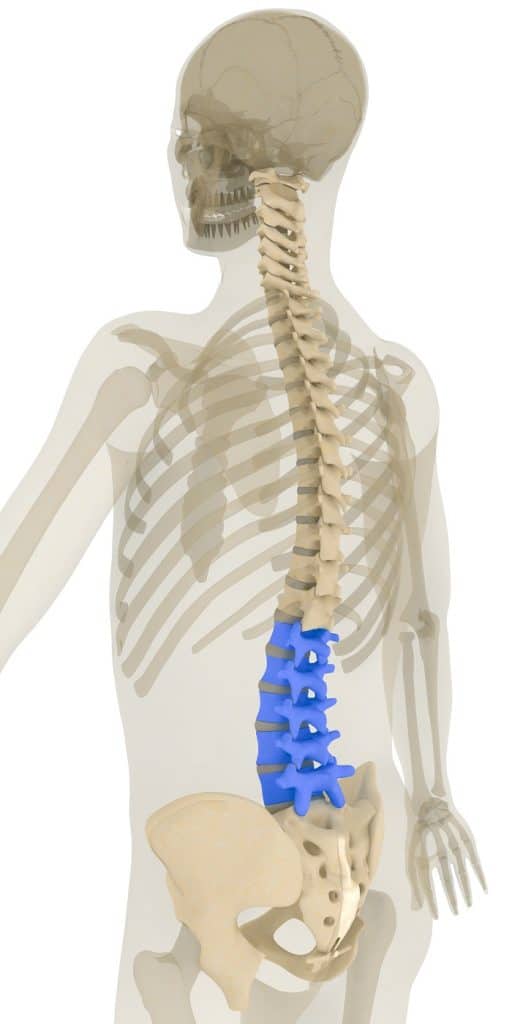A superior hypogastric plexus block is used as a diagnostic or therapeutic tool to ease pain associated with malignancy-associate and nonmalignant pain. The pain relief may be secondary to cancer which has metastasized to the pelvic region, endometriosis, or radiation injuries. This procedure can provide relief to:
- Bladder
- Urethra
- Reproductive Organs (Penis, Testes, Uterus, Vagina)
- Perineum
- Prostate
- Descending colon
- Rectum
What is a Superior Hypogastric Plexus Block?
A superior hypogastric plexus block is a procedure that provides pain relief by introducing an anesthetic directly to the nerves associated with the pain experienced. A retroperitoneal structure, the superior hypogastric plexus is a branching network of nerves and vessels that run from the vertebral column to reproductive and related organs in the lower abdomen.
The superior hypogastric plexus is located between the L5 and the S1 vertebra of the lower spine. It is comprised of both sympathetic nerves and pelvis visceral afferents tied to the aortic plexus and splanchnic nerves. From this location, it provides nerve signals to the majority of organs and bodily functions in the pelvic region.
How does a superior hypogastric plexus block help the patient?
As a minimally-invasive procedure, the superior hypogastric plexus block provides relief for patients who suffer from chronic pelvic pain. This is an especially useful procedure in patients who are either unable to take oral pain relief medication or find the side effects of these unacceptable.
A well-established treatment, the superior hypogastric plexus block offers unparalleled pain relief. In general, the pain relief is temporary; and while the duration and degree of relief vary from patient to patient, most find weeks of relief with each treatment. Some patients have found years of relief.
Side effects
As with any medical procedure, there may be side effects associated with the treatment. That said, studies at numerous top medical facilities including MD Anderson Cancer Center in Houston, Texas have found that side effects from a superior hypogastric plexus block are quite minimal.
Some of the potential side effects may include:
- Bleeding (at the injection site or into the retroperitoneal space)
- Nerve injury
- Paralysis
- Damage to organs near the injection site
- Damage to nearby blood vessels
- Distal ischemia (reduced blood flow)
- Allergic reaction to the anesthetic
- Seizure
- Infection
Procedure overview

The superior hypogastric plexus block is an outpatient procedure that generally takes less than 15 minutes to complete. There are two approaches which are used to perform the procedure:
- Posterior approach – The most common approach, the physician will insert two needles through the superior hypogastric plexus through the L5-L1 intervertebral disc. This is performed while the patient is lying face down on the abdomen. A pillow will be placed under the pelvis to allow a flattening of the normal spinal curvature. Then, the lower back will be prepped and local anesthesia will be administered. Once adequately anesthetized, the injection will begin. First, your treating physician will ensure proper placement of the needles, then the necessary block will be applied.
- Anterior approach – This approach is used either when the patient is not able to lay on their stomach or for some other reason cannot receive the injection using the posterior approach. In this approach, the patient will lay on their side while the needles are inserted through the anterior or front side.
A careful examination by your treating physician will determine which approach would be best. Regardless of the approach, the physician will use some type of guidance system to properly direct the needed to the superior hypogastric plexus. These may include computed tomography, fluoroscopy, or ultrasound.
In most cases, a local anesthetic is used but if a patient for any reason is unable to have a local, a neurolytic agent such as phenol may be used. Another treatment modality for certain pain treatments is radiofrequency ablation.
Radiofrequency ablation, or pulsed radiofrequency ablation, is a procedure that uses electrical currents via a radio wave to increase heat to nerve endings. The process is used for pelvic cancer pain when the patient is unable to use a blocking procedure or the block is not effective.
Regardless of the procedure or approach performed, success is known quickly and is marked by considerable relief from pain. Once the procedure is complete, the patient will remain at the facility for a short time to monitor vital signs.
Contact Us Today!
At MidSouth Pain Treatment Center, we offer unmatched pain relief. If you are suffering from pelvic pain, you need not suffer any longer. With seven convenient locations to better serve you, we can quickly assess how to best approach your pain management needs. Relief from suffering is a phone call away. Schedule a consultation today.







